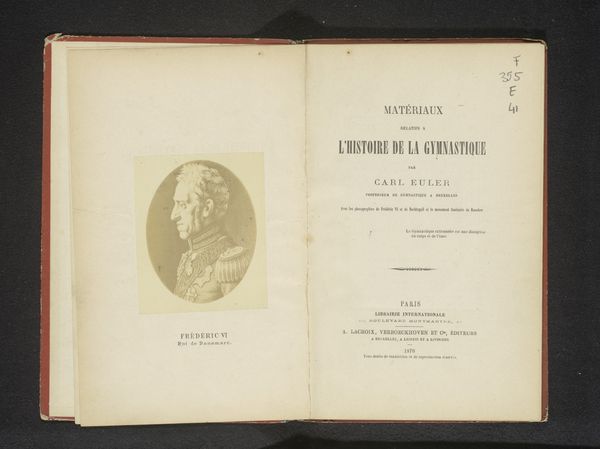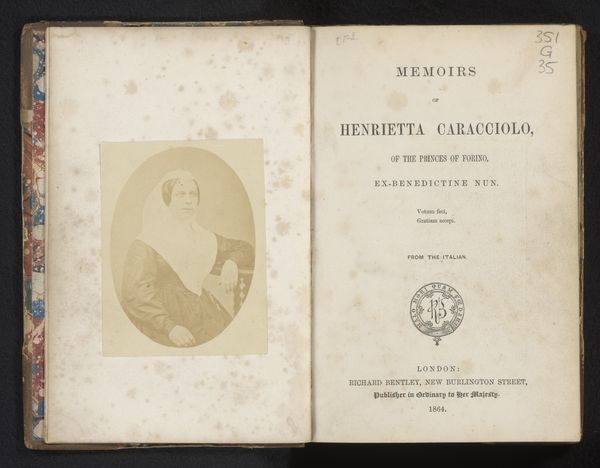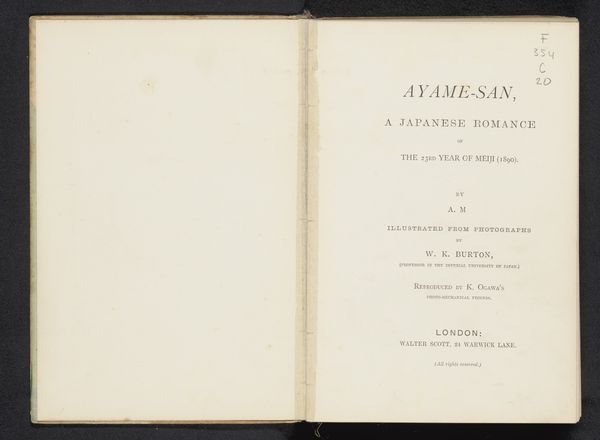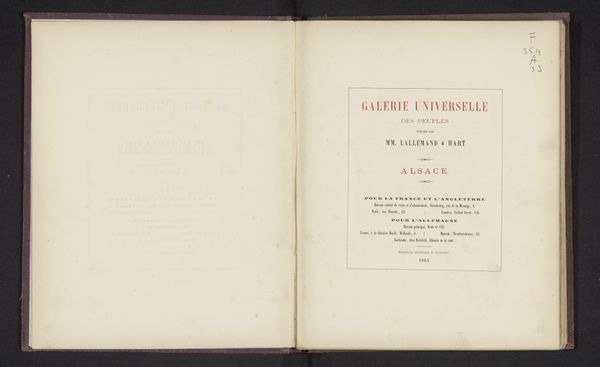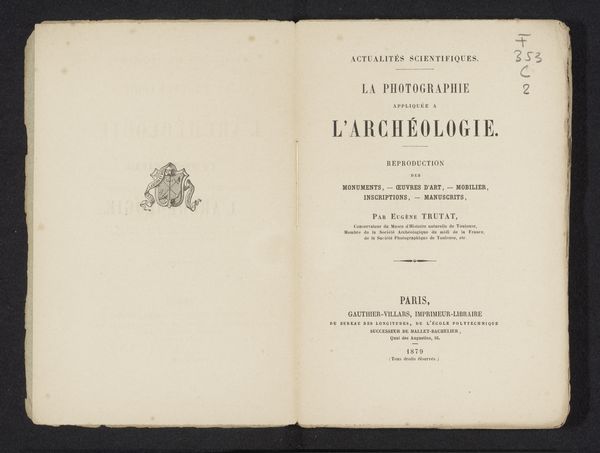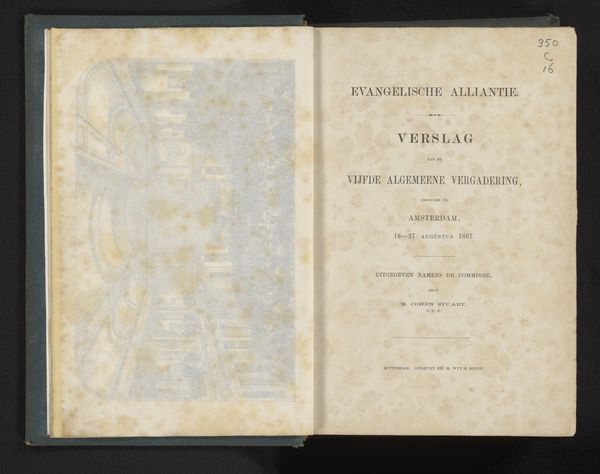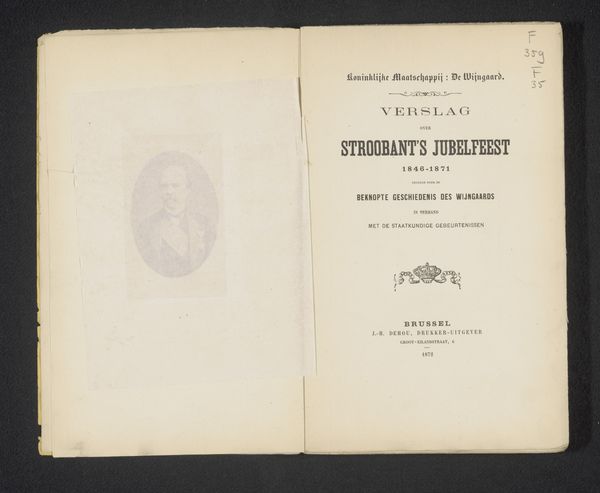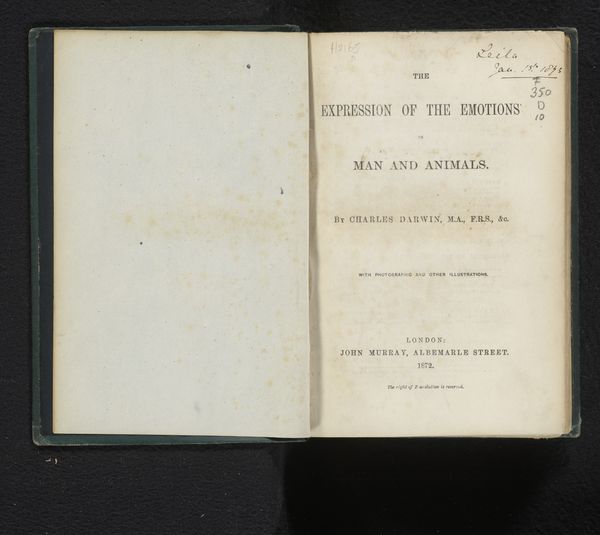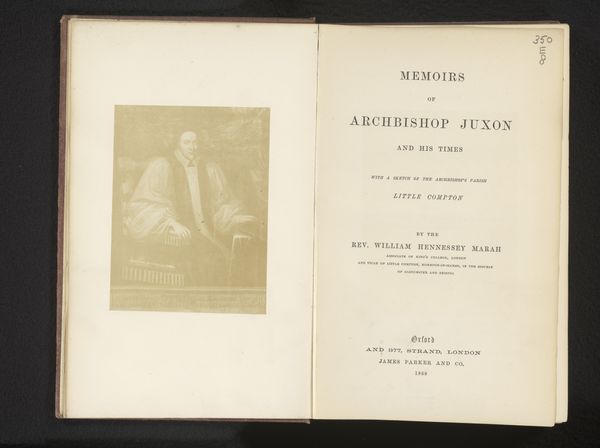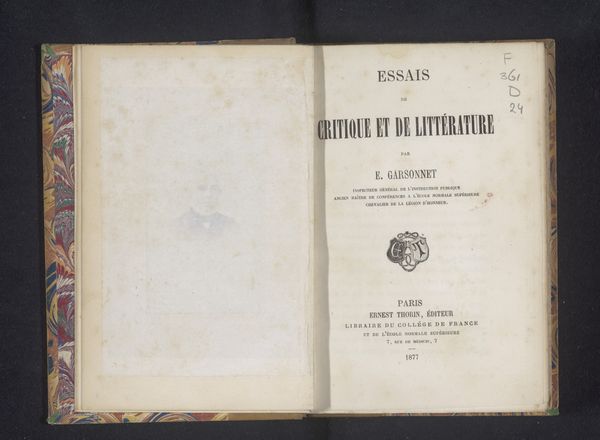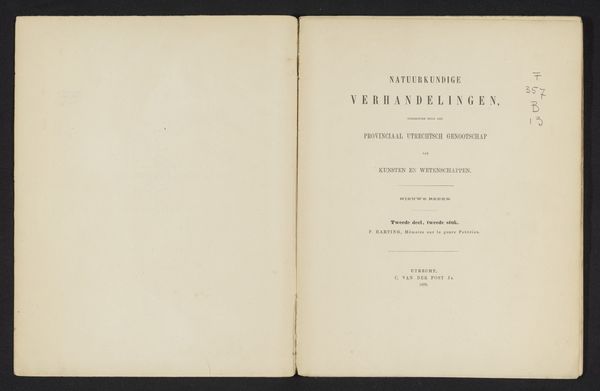
Neerland's letterkunde in de negentiende eeuw : bloemlezing, ten gebruike bij de beoefening onzer letterkunde : proza 1880
0:00
0:00
print, typography
#
portrait
# print
#
typography
#
academic-art
#
historical font
Dimensions: height 108 mm, width 85 mm, thickness mm
Copyright: Rijks Museum: Open Domain
This is the title page of J. P. de Keyzer’s anthology of 19th-century Dutch literature, published in 1880. The most striking symbol is the book itself, an object laden with centuries of accumulated meaning. Consider the act of writing and reading—how the knowledge, stories, and emotions contained within these pages traverse time. In antiquity, the codex represented a break from the scroll, democratizing knowledge. Later, during the Middle Ages, illuminated manuscripts were revered, with monastic scribes dedicated to preserving and embellishing texts. The very act of holding a book invites contemplation, a gesture of receptivity. We see the author's portrait, his hand resting upon a book, a stance reminiscent of depictions of philosophers and scholars from the Renaissance. The image of a book, thus, is not merely an object but a potent symbol. It represents a repository of collective memory and a conduit through which cultural narratives are perpetually reinterpreted. Just as language evolves, so too does our understanding of literary traditions.
Comments
No comments
Be the first to comment and join the conversation on the ultimate creative platform.
